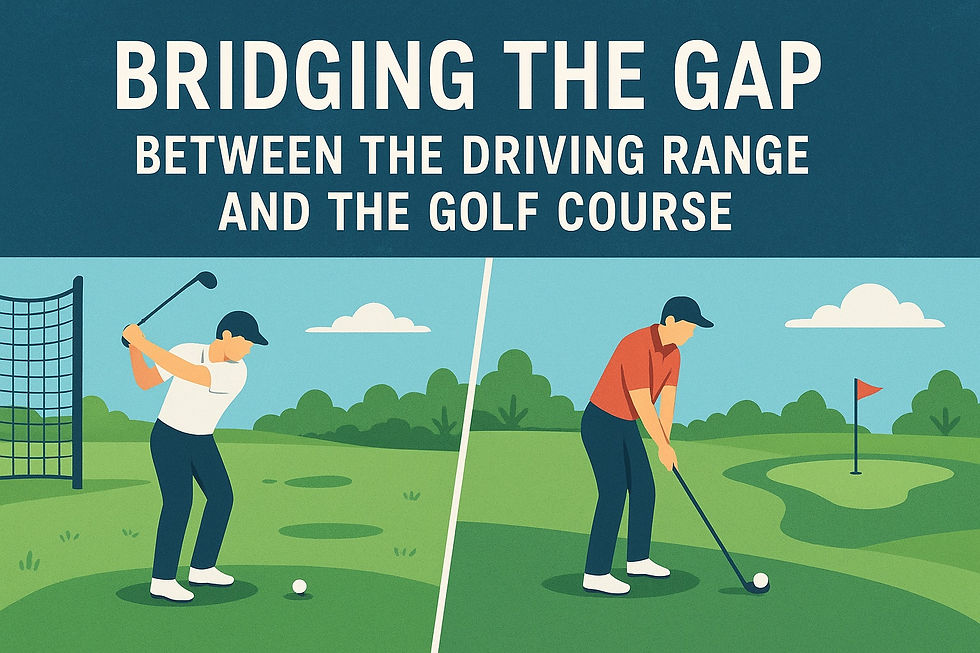The Role of Mental Imagery in Enhancing Your Golf Swing
- Eric J. Mac Donald

- Feb 3
- 2 min read

Golf is as much a mental game as it is a physical one. While hours are spent perfecting swing mechanics and honing physical skills, the power of the mind often remains untapped. Mental imagery, or visualization, is a potent tool that can bridge the gap between practice and performance, helping golfers execute shots with greater confidence and precision.
What is Mental Imagery?
Mental imagery involves creating or recreating experiences in your mind. In golf, this means visualizing your swing, the flight of the ball, and the desired outcome before actually performing the shot. This mental rehearsal primes your brain and body, aligning them towards successful execution.
Benefits of Mental Imagery in Golf
Enhanced Performance: Visualizing successful shots can improve muscle memory and coordination, leading to more consistent swings.
Increased Confidence: Seeing yourself execute perfect shots in your mind builds self-belief, reducing anxiety and enhancing focus during actual play.
Strategic Planning: Mental imagery allows you to rehearse different scenarios, helping you make better decisions on the course.
How to Incorporate Mental Imagery into Your Routine
Create a Quiet Environment: Find a calm space free from distractions. Close your eyes and take deep breaths to center yourself.
Use All Senses: Imagine the feel of the club, the sound of contact, the sight of the ball's trajectory, and even the smell of the grass. Engaging all senses makes the imagery more vivid and effective.
Visualize the Entire Process: See yourself in third person or first person approaching the ball, setting up, executing the swing, and watching the ball land exactly where you intended.
Practice Regularly: Like any skill, mental imagery improves with practice. Incorporate it into your pre-shot routine and during practice sessions.
Combining Mental Imagery with Physical Practice
Scientific research indicates that mental practice, also known as motor imagery, can be nearly as effective as physical practice because it activates similar neural pathways in the brain, essentially "rehearsing" a movement without physically performing it, leading to improved performance in the real world; this phenomenon is largely attributed to the brain's plasticity, where repeated mental visualization can shape neural connections as if physically performing the action. While mental imagery is powerful, it complements physical practice. Use visualization to reinforce what you've practiced physically. For instance, mentally rehearse the key takeaways to solidify them in your mind after a successful practice session.
Overcoming Common Challenges
Difficulty Visualizing: Start with shorter sessions and focus on specific aspects of your swing. Over time, your ability to create detailed mental images will improve.
Negative Imagery: If negative images arise, acknowledge them without judgment, then consciously replace them with positive ones.
Final Thoughts
Integrating mental imagery into your golf routine can be a game-changer. By harnessing the power of your mind, you can enhance your swing, boost your confidence, and elevate your overall performance on the course.
Ready to explore the mental side of golf further? Visit www.ericjmacdonaldpga.com for more insights and personalized coaching.
Visualize success, then make it a reality.













.jpg)



Comments